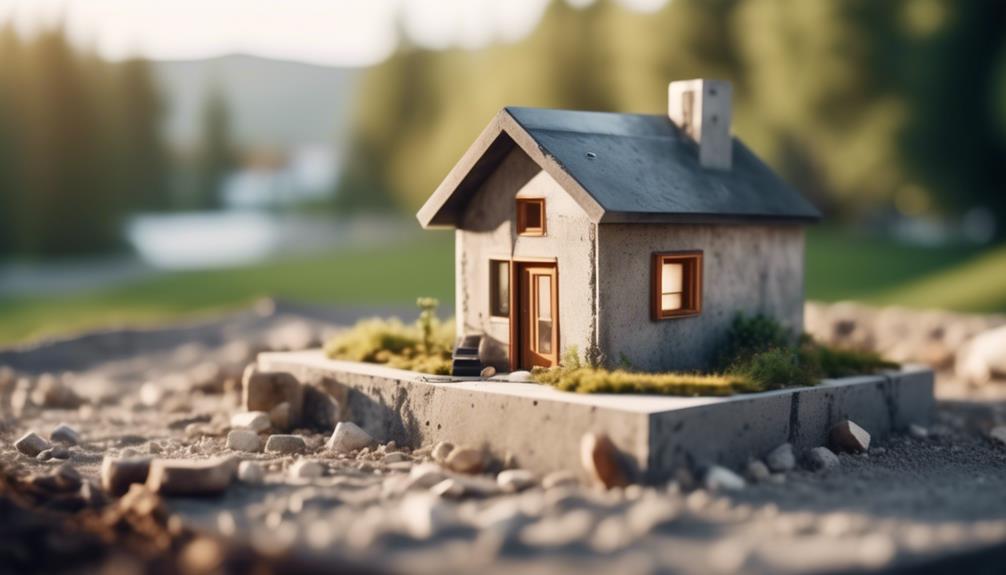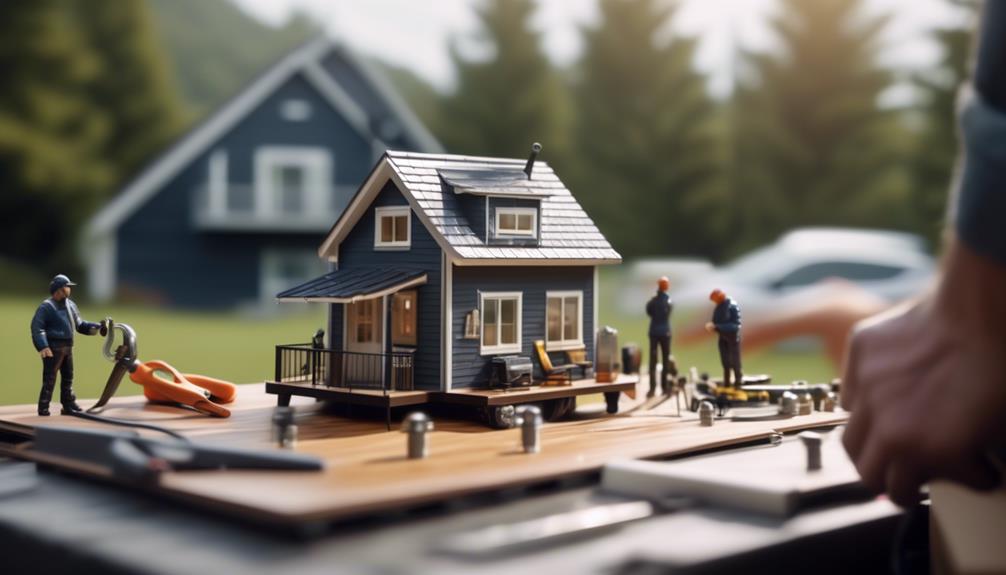Tiny homes might just be the most adorable and versatile abodes on the planet, but if you don't anchor them properly, they could quite literally blow away with the next gust of wind. You've invested not only your hard-earned money but also your dreams into this pint-sized palace, so it's crucial that you secure it with the same diligence as you would a full-sized house.
Whether you're parked in the calm of the countryside or perched on a picturesque hillside, the stability of your home depends on the anchoring techniques you choose. As you navigate the complexities of trailer-style foundations, concrete slabs, and screw pile anchors, you'll find that each method offers unique advantages and poses specific challenges, all influenced by the whims of Mother Nature and the characteristics of your chosen locale.
So, let's discuss how you can protect your compact castle against the unforeseen forces that threaten its integrity, ensuring that your sanctuary remains safe and sound.
Key Takeaways
- Assessing environmental risks is crucial for determining the appropriate anchoring method for your tiny home.
- Traditional tie-down methods such as welding steel D-rings and using ground anchors can provide stability.
- Permanent foundation solutions like concrete foundations and screw pile anchors offer long-term safety and durability.
- Innovative anchoring systems such as helical pile systems and tensioned cable anchors provide exceptional stability and adjustability.
Assessing Environmental Risks

Before securing your tiny home, it's crucial to evaluate the local environmental risks. This includes factors such as soil stability and weather patterns. By understanding these risks, you can choose an anchoring method that will ensure long-term stability and safety.
One important consideration is the ground conditions. In some settings, a concrete slab may provide a solid base for your tiny home. However, in other areas, screwing ground anchors directly into the soil may be more appropriate. Carefully assess the ground conditions to determine the best method for your specific location.
Another factor to consider is the weather. If you live in an area prone to high winds, it's vital to anchor your tiny house with a system designed to resist such forces. Consult with experts to determine the optimal number and placement of anchor points. This will help ensure that your home remains immovable during extreme weather conditions.
Lastly, regular maintenance is imperative to address any potential compromises in the anchoring system's integrity over time. By staying on top of maintenance tasks, you can identify and fix any issues before they become major problems.
Traditional Tie-Down Methods
To securely anchor your tiny home, you can weld steel D-rings onto the frame to serve as robust anchor points for traditional tie-down methods. By using various ground anchors, you'll ensure your home remains stable at ground level during harsh weather. It's crucial to select the right type of anchor bolts and Trailer Anchors for your specific environment.
| Anchor Type | Best Use Case |
|---|---|
| Earth Anchors | Soft soils or grassy areas |
| Concrete Blocks | Solid, flat surfaces |
| Tie-Down Straps | Quick, reliable fastening |
| Steel D-Rings | Permanent, strong attachment points |
Permanent Foundation Solutions

While traditional tie-down methods provide temporary stability, securing your tiny home to a permanent foundation ensures long-term safety and durability. A concrete foundation, tailored to your tiny house's frame, offers a robust anchor point that withstands extreme weather. It's essential to have the home built level on this foundation to avoid structural stress.
For softer ground, screw pile anchors excel, their helical blades burrowing deep for firm grip—though installation demands specialized machinery. The chassis of mobile homes, including Tiny Houses, must be reinforced for this rigidity. Skirting, perhaps with hay bales, adds insulation and protection.
Innovative Anchoring Systems
Exploring innovative anchoring systems reveals a range of advanced technologies designed to secure your tiny home firmly, regardless of the environmental challenges presented by your chosen location. These systems are crucial, especially for a tiny house on wheels or a mobile home, where traditional anchoring methods may not suffice.
Consider the following options:
- Helical Pile Systems: Utilize a screw-in mechanism for deep earth anchoring, providing exceptional stability.
- Ground Anchor Plates: Deploy large, buried plates connected to the frame, suitable for various soil types.
- Tensioned Cable Anchors: Offer adjustable securing, ideal for areas with high wind or seismic activity.
- Concrete Deadman Anchors: Heavy-duty concrete blocks act as anchors, connected by steel rods to the maximum height of your tiny home's frame.
Each of these innovative anchoring systems offers you, as home builders or homeowners, a practical, reliable method for securing your tiny homes.
Maintenance and Inspection Protocols

Ensuring your tiny home's stability and safety hinges on regular maintenance and inspection of its anchoring system. Whether your home is a Biggish Tiny House on a trailer or a wide mobile living space, it's crucial to follow a strict schedule of checks. Here's a technical guide to keeping your home secure:
| Maintenance Task | Frequency |
|---|---|
| Check for wear/damage | Every 6 months |
| Tighten bolts/straps | Annually or after extreme weather events |
| Review anchoring points | Biannually |
For homes using screw pile anchors or concrete foundations, assess the integrity of these elements as part of your maintenance and inspection protocols. Always adhere to the manufacturer's guidelines for specific maintenance intervals to ensure the longevity of your tiny home's anchoring techniques.
Frequently Asked Questions
How Do You Anchor a Tiny House?
To anchor your tiny house, you'll install helical piers or concrete footings, attach foundation bolts and anchor plates, and secure with earthquake straps, tie-down straps, and wind ties to a skid foundation or pier system.
How Do You Secure a Tiny House to a Trailer?
To secure your tiny house to a trailer, focus on trailer selection with balanced weight distribution. Use hitch locks, wheel chocks, anti-theft devices, tie-down straps, custom brackets, leveling jacks, and frame welding for a steadfast setup.
Is It Possible for Tiny Houses to Be Safe and Sturdy Against Extreme Weather?
Yes, your tiny house can withstand extreme weather with the right weatherproofing strategies, robust insulation options, solid foundation choices, and structural reinforcements. Comply with building codes to enhance wind resistance and earthquake preparedness.
How Do You Anchor a Cabin to the Ground?
You'll anchor your cabin by choosing foundation types like pier foundations with concrete footings or ground screws for earthquake resistance, wind bracing, and frost heave mitigation after a thorough soil analysis to prevent erosion.
Conclusion
In the end, securing your tiny home is much like fastening a ship in a tempestuous sea. Just as one sturdy anchor may hold a vessel steady against fierce waves, a well-chosen anchoring method can keep your abode safe amidst nature's whims.
Remember, it's not just about installing the right system; diligent upkeep is your silent sentinel. Embrace the technicalities, and let meticulous care be the hallmark of your tranquil haven.

